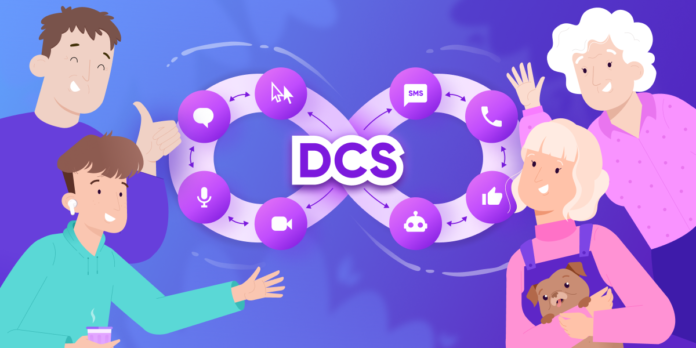This article originally appeared in The Financial Brand. View it here.
Financial institutions provide services for consumers of all ages, but most prioritize their marketing outreach to the youngest demographic, timed for when they graduate college and start entering the workforce. Forging a strong, loyal relationship with young consumers could be highly lucrative, leading to many decades of business. Each new generation represents an opportunity for an institution to grow and sustain its brand.
Those that over-brand themselves, however — as, for example, The Gen Z bank — risk alienating their existing customer base, many of whom were courted years ago when they were the emerging new generation. Financial institutions need to differentiate themselves and that is increasingly coming down to technology and how institutions digitally engage their customers.
We are well past the days of offering a toaster when customers open an account and a bowl of lollipops does nothing for people who are banking online. A decisive 78% majority prefer to bank digitally now, either via mobile app or the website, according to a 2022 Ipsos-Forbes survey. That puts a renewed emphasis on the online experience. Digital customer service (DCS) is no longer merely a convenience. It’s a clear business differentiator for financial institutions.
The question is, which technology is going to attract Gen Z and not turn off everyone else? The answer is both surprising and straightforward. But first, bankers must understand the digital divide that separates the generations and how each adopts new technologies.
A Brief Guide to Generational Tech Preferences
Baby Boomers are the least tech savvy generation today, it’s true, but they are not exactly Luddites either. 75% of Americans age 65 or older use the internet. Further, the pandemic drove many Boomers online for everything from banking and shopping to socializing with friends and family. Online spending for Boomers was up 49% in 2020 with frequency of purchases up 40%.
They are also the fastest growing demographic using Facebook, once seen as a Millennial medium. Remember also that the Boomers invented the personal computer and the internet. On the customer service front, Boomers developed and popularized the call center.
Gen X was exposed to digital technologies from a younger age, but most are still old enough to remember rotary telephones and a time when “cell” phones were a luxury. Not quite as quick to embrace emerging new technologies as younger generations, Gen X is not exactly tech-averse either. This is the generation that commercialized the internet, made mobile devices ubiquitous and challenged the call center with digital options that gave rise to the multichannel contact center.
Millennials are considered the first generation to be innately comfortable with digital technologies and have been largely cast as self-sufficient based on having the internet (on a smartphone) at their fingertips virtually 24/7. This is the generation that ushered in “Bring Your Own Device” (BYOD) at work and AI-driven personal assistants such as Alexa at home.
Nearly 100% of Millennials are on the internet with almost half being online almost constantly. This is the first generation to prefer mobile devices over PCs and laptops. It’s no surprise that they are not impressed with the multichannel contact center, demanding a more accessible omnichannel approach.
Gen Z, also called Zoomers, are digital natives who prefer self-service options, according to Gartner, and are the most comfortable with on-screen channels. In fact, 82% expect an array of digital communications options and 78% have used multiple channels to start and complete a customer service engagement. It’s too early to know what new technologies this generation will forge, but we know they demand seamless digital interactions and have high expectations for technology.
While the omnichannel approach has held great promise, there are still many limitations and friction points that hinder an end-to-end digital experience. As digital natives, a tricked out contact center with digital channels is not going to impress Gen Z. A new approach is emerging that is fully digital, integrated and seamless. We call it ChannelLess™ Architecture.
New Trend Needed:
Omnichannel is still a goal for many banks, but Gen Z is already expecting more from their financial institution.
This seamless approach breaks the phone-based mold and the channel restrictions a contact center imposes to offer a pure digital experience. Rather than getting stuck in chat and needing to call in for support, the architecture allows customers to shift to voice or video right on screen, without breaking the digital connection.
Bridging the Generational Technology Gap
So how does a bank or credit union meet the needs of each generation and bridge the gap between their technologies, from call center to multichannel or omnichannel contact center to a seamless digital-first approach? Consider how with each generation we’ve seen significant advances in customer service technology with a common thread around convenience and ease.
Back in the 1980s, calling to check a balance or open a credit card was revolutionary. Allowing customers to simply email in a request in the 1990s and eventually even chat online with a representative in the 2000s were also big leaps forward. As companies bolted more digital channels to the contact center, the next advance was to improve integration for the omnichannel of the past decade.
And now, as digital natives expect customer service to align to their highly fluid on-screen lifestyle, we see a move away from the traditional contact center toward a purely digital platform.
The undeniable trend is toward less friction and more ease-of-use through a seamless digital connection. There is no more tolerance for starting an engagement over from the beginning by making a phone call when an issue cannot be resolved via chat. Gen Z demands a fully on-screen solution with the ability to shift from chat to video or voice without breaking the digital connection. Interestingly enough, so do Millennials. And Gen X and even Boomers, for that matter.
They may have been slower to embrace the internet and Facebook, smartphones and banking apps, but Boomers eventually get there and are just as insistent today on seamless digital experiences as their Zoomer grandchildren. Everyone, regardless of age, wants easier ways to connect with their financial institution for better digital experiences. Each generation raises the bar, leading to continuously better solutions.
Older Dogs Learning New Tricks:
Baby Boomers might be slower to adopt digital banking than Gen Z, but that doesn’t mean they aren’t keenly interested.
The Generational Adoption Curve
Each new generation is savvy enough to battle-test the latest technologies, serving as early adopters for financial institutions. In fact, today’s generations map quite closely to the typical bell curve adoption chart. Gen Z is currently the first to take the plunge with Millennials close behind.
Gen X takes more of a wait-and-see approach but as younger colleagues prove the value of a new technology, they too join in. Boomers are often late adopters, but as the pandemic showed us, will often use technologies when they see the clear benefit.
This is why many institutions have been successful in courting each generation as it starts to enter the workforce. As technology has become a significant differentiator, each new generation puts emerging solutions through the paces. From ATMs to online banking to mobile check deposits, the latest generation are the fearless “bleeding edge.” They are the driving force now for a post-omnichannel, digital-first platform.
With a phased marketing approach that lets each generation feel comfortable with new technologies — on their own timeline — financial institutions can mitigate the generational risk of digital transformation and focus on making the right technology decision for all customers. That starts with the generation that is coming of age now.
Gen Z is digitally-oriented, highly connected and prefers self service, with guidance as they need it. This is fueling the move toward digital-first solutions in financial services. While omnichannel offers promises of a seamless experience, it is still essentially a phone-based system. To attract and excite Zoomers, financial institutions need a fully digital solution.
They should look for platforms that allow seamless transitions between digital channels and empower customers to forge their own digital customer experience. A digital customer service platform, built on such technology will not only engage Gen Z, but also drive new business from Millennials, Gen X and even Boomers.
Digital customer service is that generational quantum leap that can set an institution up for success for many more generations to come.
View our infographic, Customer Service Across Generations: From Boomers to Zoomers, to learn more about meeting the customer service needs of each generation.





